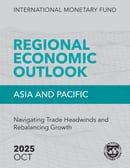This web page presents information about the work of the IMF in Bangladesh, including the activities of the IMF Resident Representative Office. Additional information can be found on the Bangladesh and IMF country page, including IMF reports and Executive Board documents that deal with Bangladesh.
At a Glance : Bangladesh's Relations with the IMF
- Current IMF membership: 191 countries
- Bangladesh Joined on August 17, 1972; accepted the obligations under Article VIII, Sections 2, 3, and 4 on April 11, 1994.
- Quota: SDR 1,066.60 million
- Outstanding loans: 630.82 million as of December 2017, equivalent to 59.14 percent of quota.
- The last Article IV Executive Board Consultation was on March 2, 2022 (Country Report 22/71)
News and Highlights
Bangladesh Economic and Financial Indicators April 2022
June 14, 2022
Bangladesh Economic and Financial Indicators March 2022
March 31, 2022
Bangladesh Economic and Financial Indicators February 2022
February 28, 2022
Bangladesh Economic and Financial Indicators, January 2022
January 31, 2022
Bangladesh Economic and Financial Indicators, December 2021
December 15, 2021
Bangladesh and the IMF
No results found. Either there was an error with the web service or there is no data returned by the web service.
Regional Economic Outlook
October 24, 2025

Navigating Trade Headwinds and Rebalancing Growth
Economies in the Asia-Pacific region have been resilient so far in 2025. Nevertheless, higher US tariffs will likely reduce external demand and eventually weigh on growth. Greater regional integration and structural reforms will be critical for sustainable growth.
Read the Report



